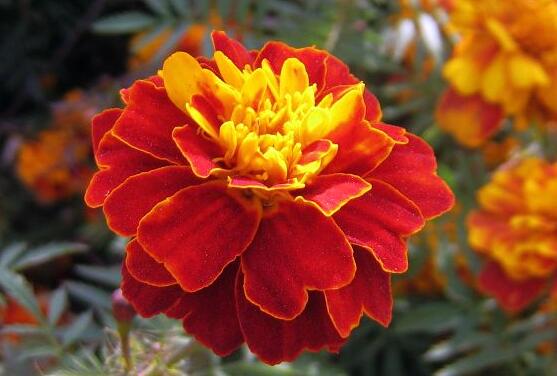How to reproduce skullcap
Scutellaria baicalensis Georgi is a very traditional Chinese medicine in China, which has a very long history of cultivation. The main medicinal site of Scutellaria baicalensis Georgi is the root, which is effective in purging fire and detoxification, stopping bleeding and calming the fetus, mainly in the treatment of febrile diseases, cough and pneumonia. The cultivation of Scutellaria baicalensis Georgi is relatively common now, and the most important thing when planting is how to reproduce. The following editor brings you the breeding method of Scutellaria baicalensis Georgi. Let's have a look!

1. Seed propagation
Seed propagation is a common propagation method of Scutellaria baicalensis Georgi, but the florescence of Scutellaria baicalensis Georgi is longer, so the time of seed ripening will be different, and it is very easy to fall off, so we should harvest the seeds immediately after they are ripe. Then remove the impurities in the seeds, select strong, full, brightly colored seeds, soak them in warm water of about 42 degrees for 5 hours, and then remove them and moisturize and germinate at 22 degrees, when about 80% of the seeds are exposed to white. Choose the appropriate sowing time, generally mainly in spring. First of all, control the row spacing and dig the sowing ditch, and spread the seeds into the sowing ditch comprehensively and evenly. Cover the fine soil properly after sowing, and if the soil is relatively dry, water it in time after sowing. Keep the soil moist before all the seedlings are unearthed.
2. Cuttage propagation
Cutting propagation does not require much time, but the survival rate is the highest in spring. Select the semi-lignified young stem tip on the robust plant, keep the length at about 7-8 cm, remove the lower leaves, and retain about 4 cuttings. Cuttings are carried out in the afternoon on cloudy or sunny days, and the density of vertical cuttings is controlled and inserted into the pre-prepared seedbed. Scutellaria baicalensis cuttings have a large rooting rate, so they should be cut as they are cut to ensure that the cuttings are fresh enough. It is necessary to water the cuttings in time, and set up a shade shed to control the shade in the field at about 60% and 70%. Watering about twice a day, pay attention to water consumption, avoid excessive moisture leading to cuttings rot, reduce the survival rate. Under normal management, it can be transplanted about two months after cutting.
3. Ramet propagation
Ramet propagation is generally carried out when Scutellaria baicalensis Georgi is harvested. During harvest, attention should be paid to the selection of excellent plants with high yield and free of diseases and insect pests, and their main roots should be cut off to act as medicinal materials. The root head is then used for reproduction, and if the harvest season is in winter, the root head can be preserved in a cellar and planted the following spring. In order to improve the survival rate, the root head is cut into many individual plants before reproduction. Keep about 3 bud eyes on each small piece. Then control the row spacing and plant it in the field, and do a good job of management.
The above is a brief introduction to how to reproduce Scutellaria baicalensis. There are many breeding methods of Scutellaria baicalensis. When we breed, we should choose reasonably according to the number of plants and our own technology. For example, if you want to shorten the growth cycle, you can use ramet propagation. That's all for today's introduction. This article is for reference only. Thank you for your reading and support.
- Prev

Prevention and control of common diseases and insect pests in flowering period of Malachite
Peacock grass achenes linear, base narrowed, 8-12 mm long, black, pubescent, crown scaly, 1-2 long awn-shaped, 2-3 short and obtuse. The florescence of malachite is from July to September. The following editor brings you details. Flowering period of malachite: annual herbs
- Next

Propagation methods of Ranunculus chinensis
Propagation methods of Ranunculus chinensis
Related
- Fuxing push coffee new agricultural production and marketing class: lack of small-scale processing plants
- Jujube rice field leisure farm deep ploughing Yilan for five years to create a space for organic food and play
- Nongyu Farm-A trial of organic papaya for brave women with advanced technology
- Four points for attention in the prevention and control of diseases and insect pests of edible fungi
- How to add nutrient solution to Edible Fungi
- Is there any good way to control edible fungus mites?
- Open Inoculation Technology of Edible Fungi
- Is there any clever way to use fertilizer for edible fungus in winter?
- What agents are used to kill the pathogens of edible fungi in the mushroom shed?
- Rapid drying of Edible Fungi

